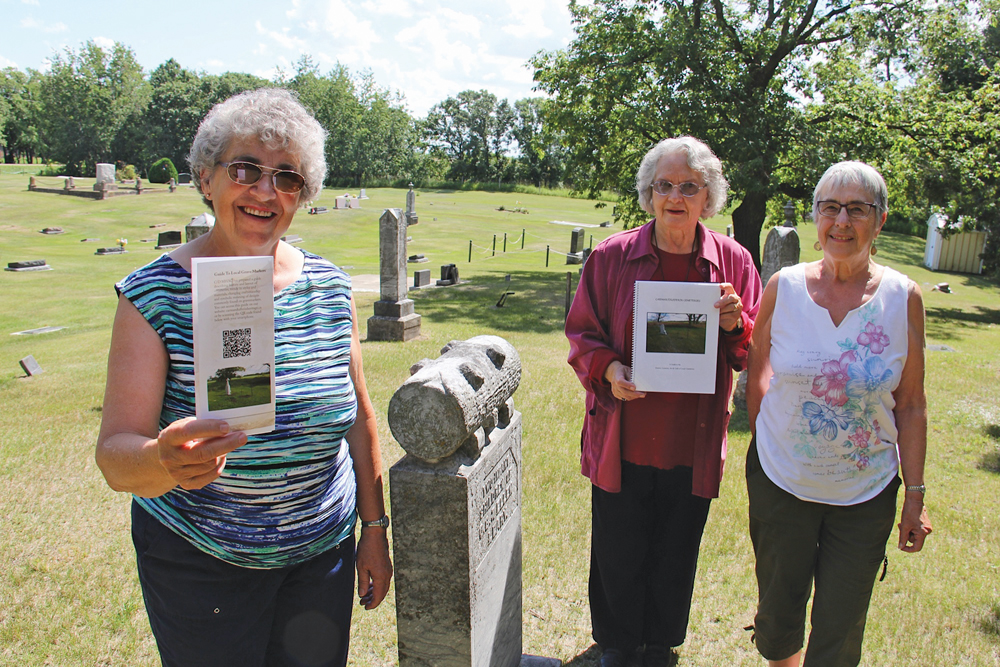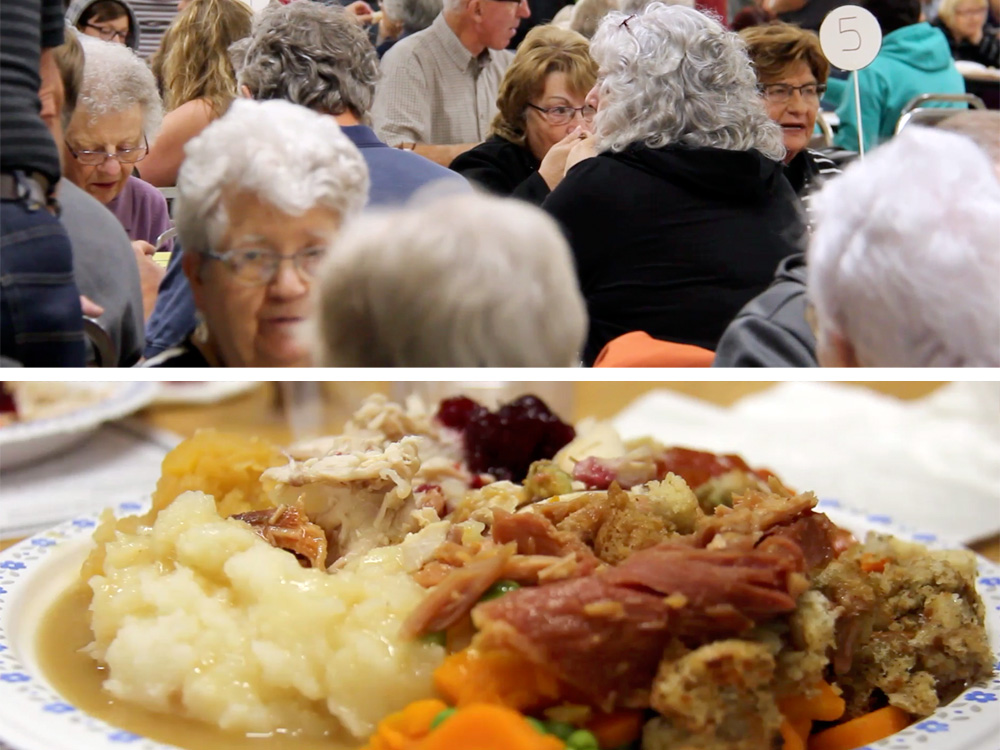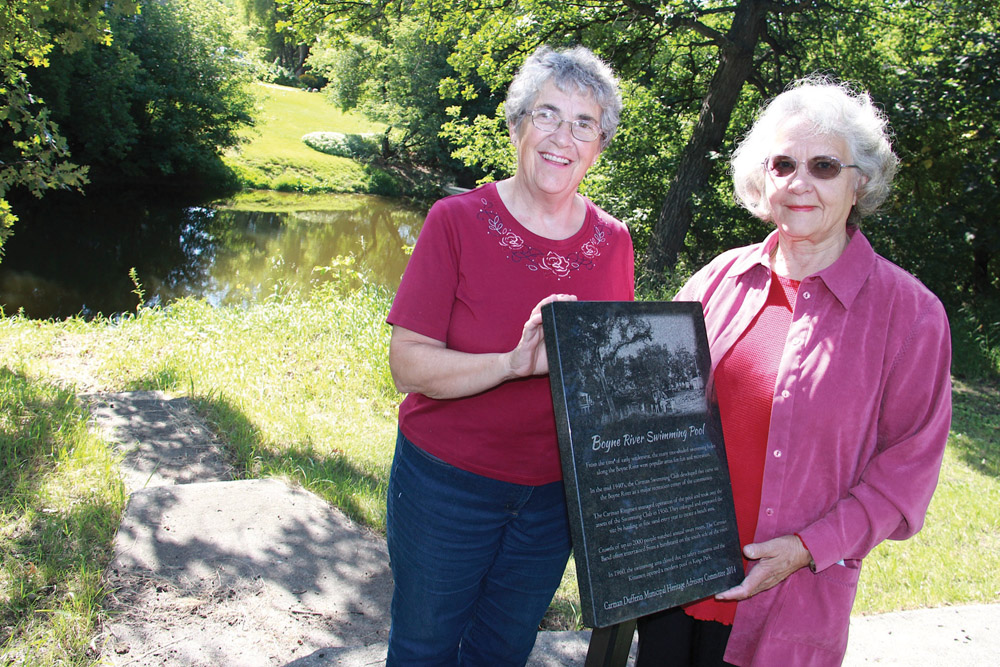People once knew how to “read” those chrysanthemums, empty chairs, logs and other symbols on headstones when they visited cemeteries. It’s a visual language mostly forgotten now.
But modern eyes instantly recognize a different symbol — a ‘QR code,’ those tiny blocks of black and white squares are for scanning with smartphones to learn something.
Those codes will soon be affixed to cemetery gates and kiosks throughout the RM of Dufferin, as a way for visitors to link to a new online guide. It will help them know not just what those symbols mean, but will bring to life many stories these sites tell, say its creators.
Read Also

Giant Canada geese have gone wild in Manitoba
Giant Canada geese are seemingly everywhere and can be fine table fare for local hunters, but 70 years ago, they were borderline extinct.
The Carman/Dufferin Municipal Heritage Committee has just posted its digital guide to nine local cemeteries, some dating to the late 1890s.
The QR code will help people visiting these sites digitally dig into the history of these places, say its creators.
The inspiration for their project was A Guide to Funerary Art in Manitoba, explains MHAC member Ina Bramadat. It was developed by architectural historian David Butterfield, now retired from the provincial Historic Resources Branch, where he documents the shapes, styles, symbolic meanings and materials used for tombstones in cemeteries he visited throughout Manitoba.
Bramadat was instantly intrigued when she saw it.
“I thought, ‘Isn’t this wonderful. These are things I never knew about,’” she said. “And then I thought, ‘Suppose we adapt it and do a little more with it in our own area.’”
Their finished guide includes a map to locate each of the public cemeteries, plus links to helping understand the grave markers and designs of each, and a glossary explaining traditional symbolic meaning of engravings on headstones.
The largest cemetery in the guide is the Greenwood Cemetery in Carman, described in the guide as “a time capsule of local heritage.” It encourages visitors to look more closely at the layout and craftsmanship of the site, as well as the changing trends and styles of the tombstones over time.
Some of the near-forgotten cemeteries in the guide include the tiny Îlets de Bois cemetery where some 100 burials took place when it served a Métis community here in the early 1800s. Another small cemetery is the Broad Valley cemetery, where Mennonites settled in the mid-1920s. Many of the 21 headstones there mark the graves of young children.
The guide also cites five abandoned burial sites in the RM too. These are located on private property and not accessible to the public.
The MHAC committee members say they hope this inspires more people to visit their local cemeteries and be able “see” so much more in them.
“It brings the history out,” says Nedra Burnett, chair of the group.
The guide also links to Butterfield’s funerary art guide.
He put it together because he was fascinated with cemeteries, and the shapes and styles and symbols on headstones.
Communities’ cemeteries highlight so many compelling stories of our past and can help us learn more about what was important to our Victorian- and Edwardian-era predecessors, he said.
They also reflect changing sensibilities. Headstones engravings have become much more personalized over time, he notes. Nowadays you may see images like tractors or a favourite pet or a meaningful saying on them.
What the Carman/Dufferin group has done is find an excellent way to share its communities’ histories and make them much more accessible to the public, Butterfield said.
“It’s a model for how other communities can get local people, local kids, visitors, people who have relatives there into the community and appreciate these places,” he said.
“These smaller rural ones… you can spend an hour wandering through and it’s just so interesting to explore these places and get a sense of what was kind of going on in these people’s minds 100 years ago.”
A Guide to Funerary Art in Manitoba notes more than 30,000 cemeteries in the province, according to the Manitoba Genealogical Society. Most are small plots containing the remains of a single pioneer family. At least 1,000 are large enough to sustain a high level of community interest.
Helpful links
Carman/Dufferin Cemeteries: A Guide to the Location, History, Art & Craft of Local Cemeteries
A Guide to Funerary Art in Manitoba




















